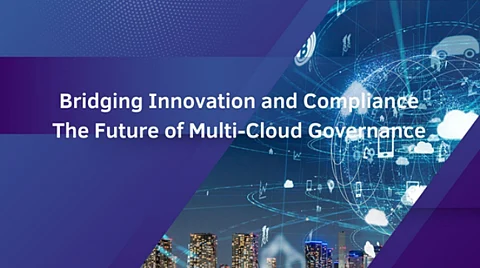

A New Era of Cloud computing has revolutionized how organizations store and manage data, but with great power comes great responsibility. As enterprises increasingly embrace multi-cloud environments, they face mounting challenges in data compliance, security, and policy enforcement. In a recent groundbreaking study, Ankit Gupta introduces an innovative multi-cloud governance protocol that promises to redefine how businesses navigate these complexities.
The rise of multi-cloud strategies has created an intricate web of compliance requirements, ranging from data localization laws to encryption mandates. His research presents a policy-driven framework that automates governance, ensuring that enterprises remain compliant without manual intervention. By utilizing a domain-specific language (DSL), organizations can encode regulations into automated policies that seamlessly integrate across multiple cloud platforms.
This integration enables real-time compliance monitoring and enforcement, significantly reducing regulatory risks while accelerating deployment cycles. The framework's adaptability allows for rapid incorporation of emerging regulations across jurisdictions, providing a scalable solution that evolves alongside the complex global regulatory landscape without compromising operational efficiency.
His framework automated orchestration layer provides real-time policy enforcement through intelligent metadata tagging and context-aware routing mechanisms. The system continuously monitors regulatory landscape changes, automatically adjusting data handling protocols to maintain compliance without manual intervention. Additionally, it implements predictive analytics to forecast potential compliance gaps before they manifest, allowing proactive remediation. The orchestration layer's machine learning capabilities enable it to improve efficiency over time, learning from past decisions to optimize resource allocation while maintaining strict regulatory adherence. This seamless integration of compliance requirements into operational workflows eliminates traditional friction between innovation speed and regulatory caution.
This same dichotomy makes for security in multi-cloud environments, where data is currently scattered across multiple providers. The proposed governance protocol integrates cryptographic proofs and blockchain-attested attestations to verify compliance and ensure that the data captured is indeed the same. Such security assurances give enterprises immutable audit trails and put them firmly within the trust and transparency of cloud-based operation.
His framework implements zero-knowledge proofs for the verification of compliance without exposing the underlying sensitive information, and it allows third parties to perform audits without compromising security with the following characteristics: its quantum-resistant encryption algorithms fortify the future-proof data against emerging computational threats. It employs homomorphic encryption mechanisms that allow organizations to run analytics on encrypted data while the data remains encrypted across clouds. The cross-cloud identity management system of the framework then establishes seamless but secure authentication protocols while definitely closing security gaps between environments under strict least-privilege principles. In fact, this whole security strategy makes multi-cloud vulnerabilities potential strategic advantages.
Apart from compliance requirements and other security concerns, the multi-cloud governance protocol can also confer benefits of considerable cost savings to an organization. Such savings are derived from the automation of policy enforcement and the thereby reduction of manual oversight, which helps to cut operational expenses and to lessen the cost of compliance breaches. Further cost savings arise from the protocol's data sourcing and transfer optimization capabilities, adding weight to enterprises' arguments when negotiating ways of traversing the convoluted multi-cloud landscape.
Predictive resource allocation under this framework avoids overprovisioning without compromising performance. Its unified monitoring dashboard opens up unprecedented visibility into cross-cloud expenses, targeting redundancies and suggesting avenues for consolidation. Moreover, using real-time pricing signals to actively transfer workloads to the least-costly cloud environments, the protocol's intelligent workload balancing delivers positive ROI that extends beyond benefit from typical governance techniques.
Cloud technologies are changing and evolving rapidly; therefore, the governance solutions that would match the pace will grow in necessity. The framework is built to allow itself to absorb changes with regard to upcoming regulations and technological advancements into the future. The architecture is driven by the AI classification systems and self-optimizing architecture for a future-ready concept of multi-cloud governance.
The framework adopts federated learning techniques that promote intra-organizational synergy without compromising data sovereignty. Its modular architecture allows for updates at the level of components interchangeable with custom regulatory demands, thus avoiding disruptions to business processes. His application is characterized by adaptive risk scoring algorithms which will actually recalibrate on an ongoing basis according to new threat vectors and new compliance requirements. This kind of proactive means converting governance into a strategic advantage that allows organizations to confidently traverse increasingly fragmented digital ecosystems with regulatory alignment.
Innovative edge-computing mechanisms of the presented protocol facilitate real-time verifications of compliance at the points of data ingestion, thus removing concerns about latencies in a distributed setting. The semantic parsing of the regulatory language allows the protocol to convert complex compliance requirements into machine-executable policies without human interpretational biases.
In conclusion,In this day and age where data is a core asset, organizations should know that effective cloud governance should not take a backseat. The innovation of Ankit Gupta in multi-cloud governance sets a benchmark with compliance, security, and automation. Through the implementation of the latest policy enforcement mechanisms, cryptographic safeguards, and cost-saving innovations, this protocol offers a gateway to a safer and smarter landscape of cloud computing.
